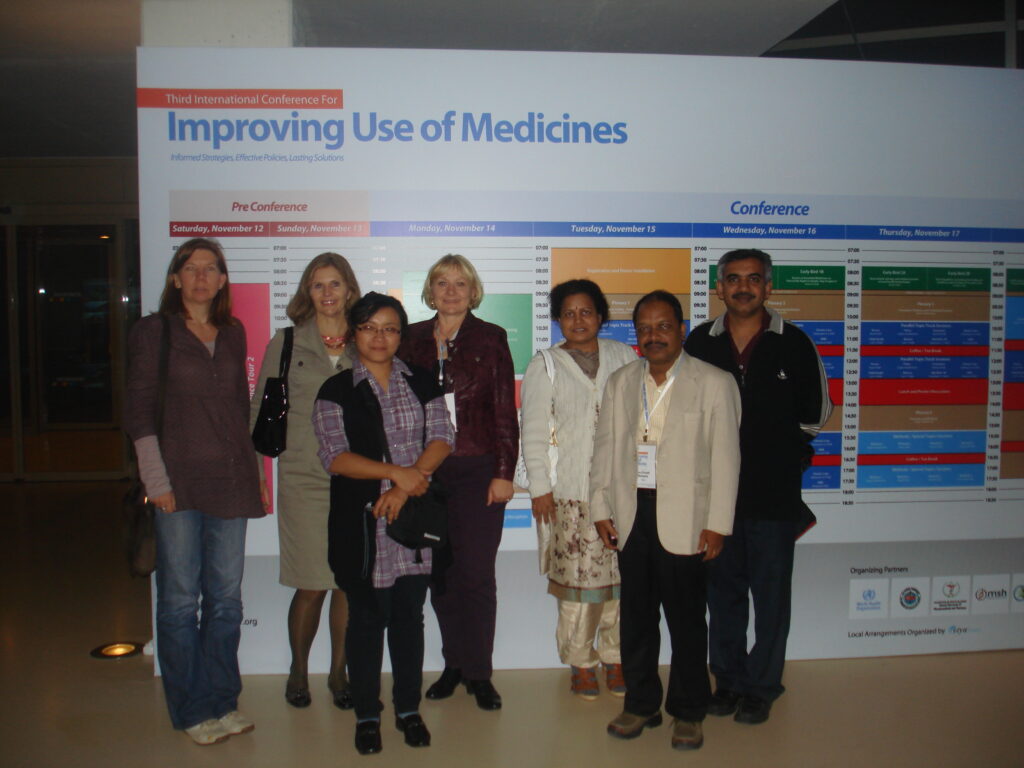





Rational Medicine Use. WHO policy.
Разумное отношение к лекарственным средствм. Политика ВОЗ
Literature
Преподавание населению основ общественного здоровья и образование в области лекарств: система оценки
Academic Medicine 95(12):p 1853-1863, December 2020. | DOI: 10.1097/ACM.0000000000003737
Johnson, Sherese B. MPH; Fair, Malika A. MD, MPH; Howley, Lisa D. MEd, PhD; Prunuske, Jacob MD, MSPH; Cashman, Suzanne B. ScD; Carney, Jan K. MD, MPH; Jarris, Yumi Shitama MD; Deyton, Lawrence R. MSPH, MD; Blumenthal, Daniel MD, MPH; Krane, N. Kevin MD; Fiebach, Nicholas H. MD; Strelnick, Alvin H. MD; Morton-Eggleston, Emma MD, MPH; Nickens, Chloe; Ortega, LaVonne MD, MPH
Abstract
Curriculum models and training activities in medical education have been markedly enhanced to prepare physicians to address the health needs of diverse populations and to advance health equity. While different teaching and experiential learning activities in the public health and population health sciences have been implemented, there is no existing framework to measure the effectiveness of public and population health (PPH) education in medical education programs. In 2015, the Association of American Medical Colleges established the Expert Panel on Public and Population Health in Medical Education, which convened 20 U.S. medical faculty members whose goal was to develop an evaluation framework adapted from the New World Kirkpatrick Model. Institutional leaders can use this framework to assess the effectiveness of PPH curricula for learners, faculty, and community partners. It may also assist institutions with identifying opportunities to improve the integration of PPH content into medical education programs. In this article, the authors present outcomes metrics and practical curricular or institutional illustrations at each Kirkpatrick training evaluation level to assist institutions with the measurement of (1) reaction to the PPH education content, (2) learning accomplished, (3) application of knowledge and skills to practice, and (4) outcomes achieved as a result of PPH education and practice. A fifth level was added to measure the benefit of PPH curricula on the health system and population health. The framework may assist with developing a locally relevant evaluation to further integrate and support PPH education at U.S. medical schools and teaching hospitals.
Advocacy Curricula in Graduate Medical Education: an Updated Systematic Review from 2017 to 2022.
Учебные программы по адвокации в последипломном медицинском образовании: обновленный систематический обзор с 2017 по 2022 год
J Gen., Intern Med.,
Abstract
Background: Advocacy is an integral component of a physician’s professional responsibilities, yet efforts to teach advocacy skills in a systematic and comprehensive manner have been inconsistent and challenging. There is currently no consensus on the tools and content that should be included in advocacy curricula for graduate medical trainees.
Objective: To conduct a systematic review of recently published GME advocacy curricula and delineate foundational concepts and topics in advocacy education that are pertinent to trainees across specialties and career paths.
Methods: We conducted an updated systematic review based off Howell et al. (J Gen Intern Med 34(11):2592-2601, 2019) to identify articles published between September 2017 and March 2022 that described GME advocacy curricula developed in the USA and Canada. Searches of grey literature were used to find citations potentially missed by the search strategy. Articles were independently reviewed by two authors to identify those meeting our inclusion and exclusion criteria; a third author resolved discrepancies. Three reviewers used a web-based interface to extract curricular details from the final selection of articles. Two reviewers conducted a detailed analysis of recurring themes in curricular design and implementation.
Results: Of 867 articles reviewed, 26 articles, describing 31 unique curricula, met inclusion and exclusion criteria. The majority (84%) represented Internal Medicine, Family Medicine, Pediatrics, and Psychiatry programs. The most common learning methods included experiential learning, didactics, and project-based work. Most covered community partnerships (58%) and legislative advocacy (58%) as advocacy tools and social determinants of health (58%) as an educational topic. Evaluation results were inconsistently reported. Analysis of recurring themes showed that advocacy curricula benefit from an overarching culture supportive of advocacy education and should ideally be learner-centric, educator-friendly, and action-oriented.
Discussion: Combining core features of advocacy curricula identified in prior publications with our findings, we propose an integrative framework to guide design and implementation of advocacy curricula for GME trainees. Additional research is needed to build expert consensus and ultimately develop model curricula for disseminated use.
Систематический обзор учебных программ по адвокации в последипломном медицинском образовании.
Abstract
Background
Professionalism standards encourage physicians to participate in public advocacy on behalf of societal health and well-being. While the number of publications of advocacy curricula for GME-level trainees has increased, there has been no formal effort to catalog them.
Objective
To systematically review the existing literature on curricula for teaching advocacy to GME-level trainees and synthesize the results to provide a resource for programs interested in developing advocacy curricula.
Methods
A systematic literature review was conducted to identify articles published in English that describe advocacy curricula for graduate medical education trainees in the USA and Canada current to September 2017. Two reviewers independently screened titles, abstracts, and full texts to identify articles meeting our inclusion and exclusion criteria, with disagreements resolved by a third reviewer. We abstracted information and themes on curriculum development, implementation, and sustainability. Learning objectives, educational content, teaching methods, and evaluations for each curriculum were also extracted.
Results
After reviewing 884 articles, we identified 38 articles meeting our inclusion and exclusion criteria. Curricula were offered across a variety of specialties, with 84% offered in primary care specialties. There was considerable heterogeneity in the educational content of included advocacy curriculum, ranging from community partnership to legislative advocacy. Common facilitators of curriculum implementation included the American Council for Graduate Medical Education requirements, institutional support, and preexisting faculty experience. Common barriers were competing curricular demands, time constraints, and turnover in volunteer faculty and community partners. Formal evaluation revealed that advocacy curricula were acceptable to trainees and improved knowledge, attitudes, and reported self-efficacy around advocacy.
Discussion
Our systematic review of the medical education literature identified several advocacy curricula for graduate medical education trainees. These curricula provide templates for integrating advocacy education into GME-level training programs across specialties, but more work needs to be done to define standards and expectations around GME training for this professional activity.
